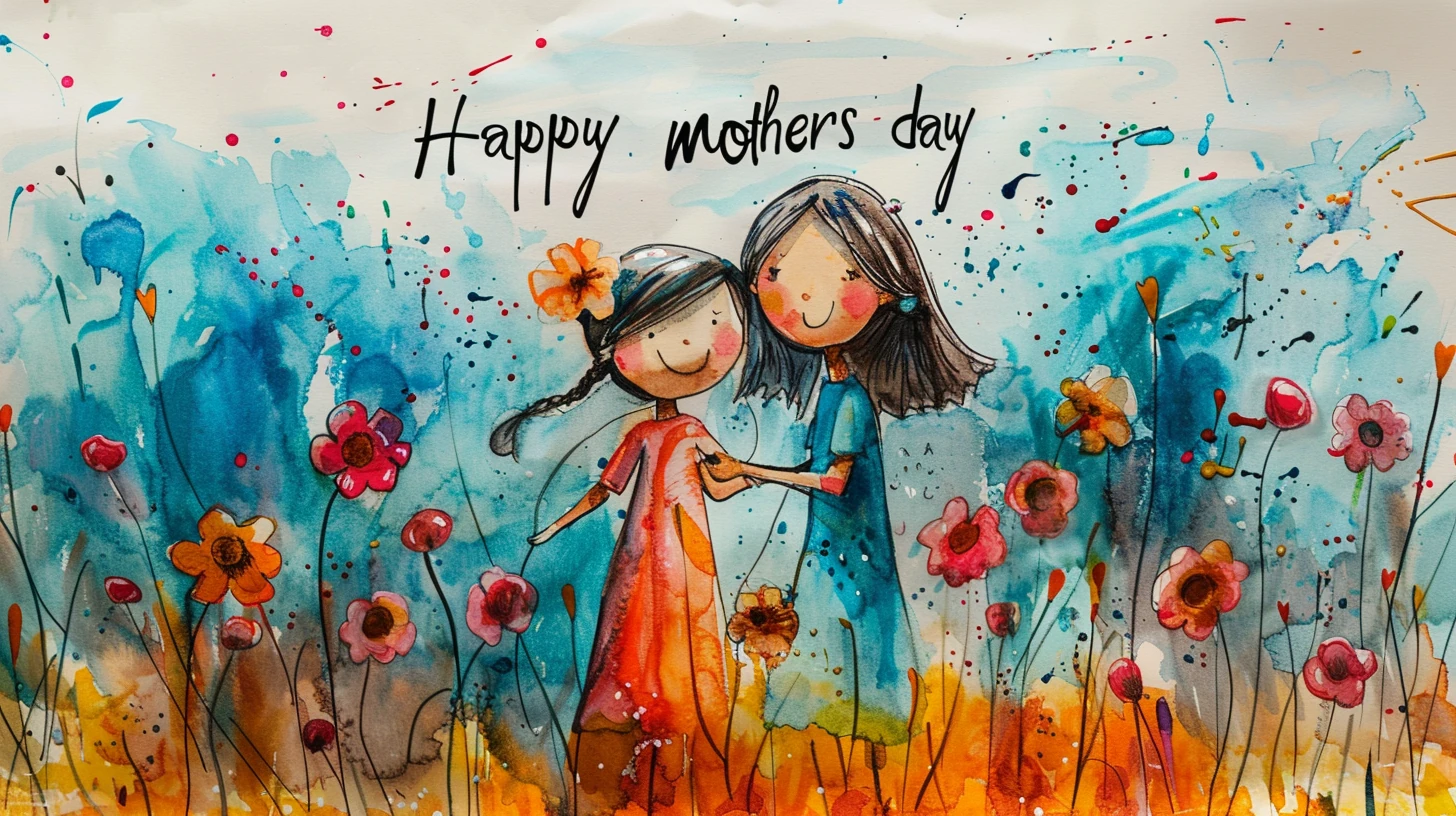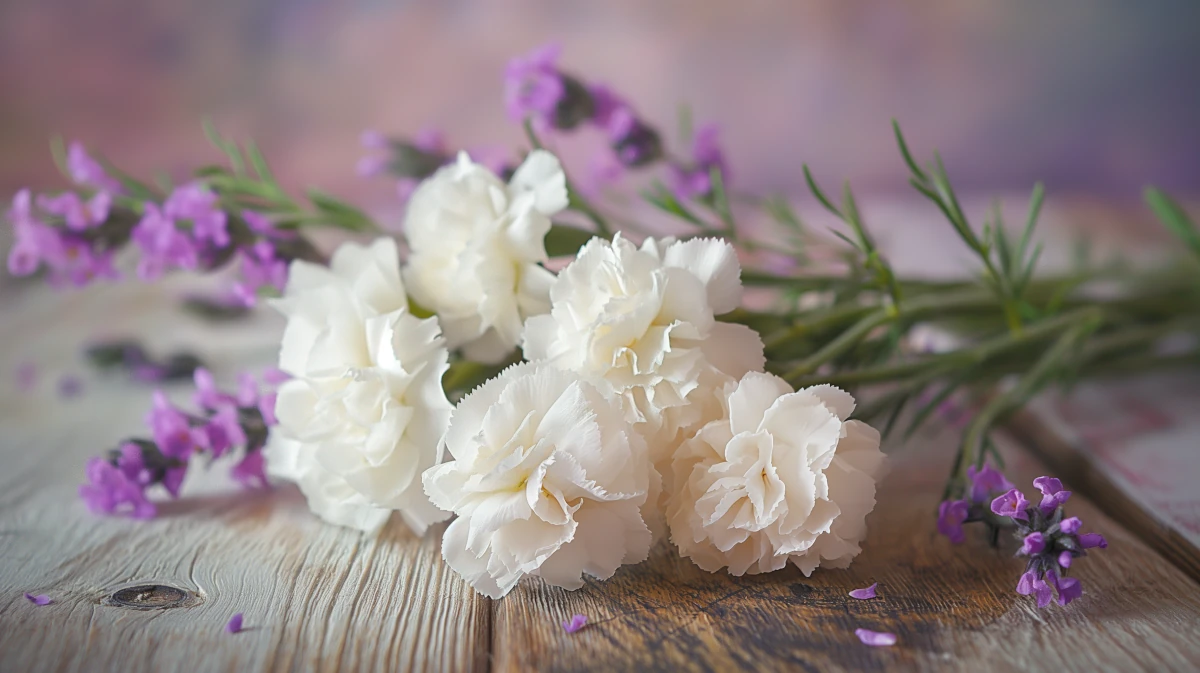
Published on: Apr 24, 2024
50 Must-Know Mother's Day Facts for Everyone
A warmth that fills the heart when Mother's Day approaches. It's a time when flowers bloom in their fullest, breakfasts in bed become a delightful tradition, and gratitude towards mothers intensifies across the globe.
There's a lot you might not know to this heartfelt holiday. From saddening origins to diverse global celebrations, Mother's Day is a deep well of fascinating stories and statistics.
Are you curious about how different cultures honor their mothers? Or perhaps you’re interested in the astonishing numbers that define Mother's Day spending habits? Maybe you're intrigued by the symbolic meanings behind the gifts we give?
We’ve gathered a bouquet of fun, surprising, and even controversial facts split into five categories:
- Historical Facts (sorted in chronological order)
- Cultural Facts & Variations (sorted by country/continent)
- Statistical Facts
- Symbolism Facts
- Controversy Facts
Take a look at our list of 50 mother's day facts. We believe this is the most complete list of Mother's Day facts out there!
Historical Facts About Mother's Day
[2500 BCE] The earliest version of a "Mother's Day" was in the time of ancient Greeks and Romans, who held festivals in honor of the mother goddesses Rhea and Cybele.
[204 BCE] The Romans had a festival in the month of March with a focus on mothers. The festival was dedicated to Cybele, a mother goddess. The festival was called "Hilaria" and lasted three days.
[14th century] The custom of children, serving as servants or apprentices, returning home once a year on Mothering Sunday began during medieval times in Britain.
[16th century] Mothering Sunday, the Christian practice of visiting one's mother church annually, evolved into a family reunion and celebration of motherhood.
[1906] A French ceremony to honor mothers was initially introduced in 1906 in Artas, a village in Isère, for mothers of large families. This later evolved into a more inclusive celebration of all mothers.
[1908] Anna Jarvis founded the American version of Mother’s Day in 1908 to honor her own mother and the sacrifices mothers made for their children. This is frequently regarded as the birth of modern-day's Mother's Day.
[1914] Anna Jarvis campaigned for Mother’s Day to become a recognized holiday in the United States. By 1914 the proclamation was signed by President Woodrow Wilson, and can be seen below.
President Woodrow Wilson’s Mother’s Day Proclamation, May 9, 1914: https://t.co/kmB0ZZIGD5 pic.twitter.com/dPLPPC7BX9
— US National Archives (@USNatArchives) May 14, 2017
[1924] In Australia, Janet Heyden started a Mother’s Day tradition in 1924 by providing gifts to lonely, forgotten mothers.
[1949] Originally, Japan celebrated Mother's Day on the birthday of Empress Kōjun on March 6, which was later changed to the second Sunday of May in 1949.
[1956] In many Arab countries, Mother’s Day was first introduced in 1956 in Egypt and is celebrated on March 21, marking the start of the spring season.
[1966] President Lyndon B. Johnson issues an annual proclamation declaring the second Sunday in May as Mother's Day, reinforcing the celebration as a national holiday in the United States. While similar to the event in 1914 by President Woodrow Wilson, this proclamation helped establish annual recognition.
[1972] The first Mother's Day in China: While not aligned with the Western celebration date, China recognized Mother’s Day officially for the first time in 1997, but smaller, regional celebrations began in the early 1970s as the country opened up a post-Cultural Revolution.
Cultural Variations of Mother's Day
Americas
[USA] In the United States, Mother's Day is often celebrated with breakfast in bed, cards, and gifts, emphasizing personal appreciation for mothers.
[MEXICO] Mother's Day in Mexico is celebrated vibrantly on May 10th regardless of the day of the week; it includes church masses, high-spirited gatherings, and music.
[BRAZIL] Brazil treats Mother's Day as one of the most commercially significant holidays next to Christmas, with elaborate celebrations and widespread public and family gatherings.
Europe
[ITALY] In Italy, Mother's Day, or 'La Festa della Mamma', is celebrated with children presenting their mothers and grandmothers with handmade gifts and poems.
[UNITED KINGDOM] In the United Kingdom, the tradition of Mothering Sunday often involves baking a Simnel cake—a light fruit cake—to present to mothers.
Time out of time: Mothering Sunday, the Fourth Sunday of Lent.
— Jacqueline (Bee) Durban 🇵🇸 (@radicalhoneybee) March 27, 2022
This week I have been making a traditional Mother's Day simnel cake. Delicious!
More about simnel cake & recipe at: https://t.co/rOG7cgXgYd pic.twitter.com/vSZIAqgpox
[SERBIA] Mother's Day in Serbia is part of a series of family holidays in December, starting with Children's Day and followed by Father's Day, each involving specific family rituals and gift-giving.
[RUSSIA] Mother's Day in Russia is celebrated on two separate dates: International Women's Day on March 8 and the last Sunday in November.
[NORWAY] Norway’s Mother’s Day celebration on the second Sunday of February was chosen to avoid clashing with other holidays in May.
[SPAIN][PORTUGAL] The Feast of the Immaculate Conception on December 8 influenced historical celebrations of Mother’s Day in Spain and Portugal, which now observe it in May.
Asia
[INDONESIA] Indonesia celebrates Mother's Day on December 22nd, recognizing the spirit of Indonesian women and the contributions of mothers to society.
[NEPAL] In Nepal, Mother's Day or 'Mata Tirtha Aunsi' involves children giving gifts and paying homage to their mothers, and those whose mothers have passed away go to Mata Tirtha ponds to perform rituals.
[ARMENIA] Armenians celebrate Mother's Day on April 7, combining it with Beauty Day to honor the dual celebration of beauty and motherhood.
[SOUTH KOREA] South Koreans celebrate Parent's Day on May 8th, where children gift carnations to their parents as a token of gratitude and respect.
[JAPAN] In Japan, Mother's Day was originally celebrated on the birthday of Empress Kōjun on March 6, which was later changed to the second Sunday of May in 1949.
[CHINA] In China, Mother's Day is celebrated on the second Sunday of May. The day aligns with traditional Confucian values that deeply emphasize respect and devotion to one's parents, known as filial piety.
[INDIA] In India, Mother's Day is observed on the second Sunday of May, with gifts, cards, and flowers to honor mothers, reflecting Western influences melded with native reverence for motherhood.
Africa
[ETHIOPIA] In Ethiopia, Mother's Day spans three days and is part of the Antrosht festival, which includes large meals and family gatherings.
[MALAWI] Mother’s Day in Malawi is also World Rural Women’s Day and includes public speeches and celebrations.
[SOUTH AFRICA] In South Africa, Mother's Day is celebrated on the second Sunday of May with flowers, cards, and other tokens of appreciation, often including family dinners.
Mother's Day by the Numbers: Statistics & Trends
In 2024, it is estimated that Americans will spend over $37 billion on Mother's Day gifts (2023: $35.7B, 2022: $31.7B).
Consumers are projected to spend an average of $280 per person on Mother’s Day in 2024, up from $274.02 in 2023, according to forecasts based on inflation and consumer spending trends.
The National Retail Federation expects that 85% of U.S. adults will celebrate Mother's Day in 2024, maintaining a high level of participation similar to previous years.
Flower sales for Mother's Day are expected to make up about 25% of annual floral purchases, with roses, tulips, and peonies among the most popular choices.
In 2024, approximately $8 billion is expected to be spent on jewelry for Mother’s Day.
Special outings such as dinners or brunches are anticipated to account for $6 billion in spending.
Digital gift-giving is on the rise, with electronics and online gift cards expected to account for over $5.5 billion in spending for Mother's Day 2024.
In terms of demographics, individuals aged 35-44 are predicted to be the highest spenders for Mother’s Day, averaging around $400 per person, driven by their desire to honor their mothers with more elaborate gifts.
Mother's Day remains one of the busiest days for restaurants in the U.S., with nearly 50% of families planning to dine out to celebrate.
Gifts of experience, such as spa days or concert tickets, continue to grow in popularity, with approximately 30% of people planning to give such experiences in 2024.
Symbols and Significance of Mother's Day
Mother's Day cards are the third-most commonly given gift on the holiday, following flowers and special outings. Over 113 million cards are exchanged annually, reinforcing the personal communication between families.

© slaksy.com
Carnations became associated with Mother's Day in the United States due to Anna Jarvis, who used them as symbols of a mother's pure love.
In many cultures, lilies are associated with Mother's Day because they symbolize purity and motherhood. In Christianity, the white lily is linked to the Virgin Mary's purity and her role as the mother of Jesus.
In Thailand, jasmine flowers are given on Mother's Day as a symbol of motherly love and respect. Jasmine is considered a symbol of the mother's purity and gentleness.
Many people wear a red or pink carnation to honor living mothers and a white carnation to honor deceased mothers, symbolizing the enduring nature of a mother's love, whether she is still living or has passed away.
Mother's Day in Ethiopia is celebrated with community meals as a symbol of unity and gratitude toward mothers. Sharing a meal is symbolic of family togetherness and maternal nurturing.
Controversies and Critiques of Mother's Day
Anna Jarvis, the founder of Mother's Day in the United States, later fought against the commercialization of the holiday, arguing that it detracted from the personal and sentimental intent of honoring mothers.
Critics of Mother's Day argue that it reinforces traditional gender roles by emphasizing cooking and homemaking gifts, and some feminist groups have campaigned for a broader recognition of women's roles outside of the family context.
The holiday is a source of stress and sadness for some who have lost their mothers, or those with strained maternal relationships, or individuals struggling with infertility, highlighting the need for sensitivity in how the day is marketed and celebrated.
